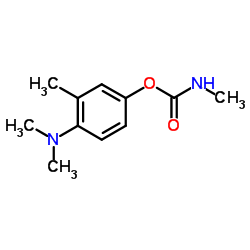Journal of Environmental Science and Health, Part B: Pesticides, Food Contaminants and Agricultural Wastes
1985-04-01
The sorptive capacity of an aquatic macrophyte for the pesticide aminocarb.
P Weinberger, R Greenhalgh
Index: J. Environ. Sci. Health B 20(2) , 263-73, (1985)
Full Text: HTML
Abstract
Ceratophyllum demersum exposed to a constant 1 microgram/ml aminocarb exhibited a large capacity for the sorption of the pesticide, up to 400 micrograms/g fresh weight in the dark and 1000 micrograms/g fresh weight in the light. Smaller, actively growing sprigs sorbed 5 times more pesticide per gm fresh weight than larger, older sprigs, although total uptake per plant was greater in the larger plants. Membrane conformation and integrity appear to be important factors in determining the capacity of this aquatic plant for pesticide sorption.
Related Compounds
| Structure | Name/CAS No. | Molecular Formula | Articles |
|---|---|---|---|
 |
Aminocarb
CAS:2032-59-9 |
C11H16N2O2 |
Related Articles:
More...
|
Mining biologically-active molecules for inhibitors of fatty...
2009-01-01 [Bioorg. Med. Chem. Lett. 19 , 6793-6, (2009)] |
|
Influence of formulation properties on droplet spectra and s...
1985-07-01 [J. Environ. Sci. Health B 20(2) , 167-86, (1985)] |
|
Photolysis of pesticides: influence of epicuticular waxes fr...
2001-06-01 [Pest Manag. Sci. 57(6) , 522-6, (2001)] |
|
Measurement of aminocarb in long-distance drift following ae...
1989-01-01 [Bull. Environ. Contam. Toxicol. 42(1) , 37-44, (1989)] |
|
The interaction between cells in different phases of the cel...
1991-02-01 [Ecotoxicol. Environ. Saf. 21(1) , 25-31, (1991)] |